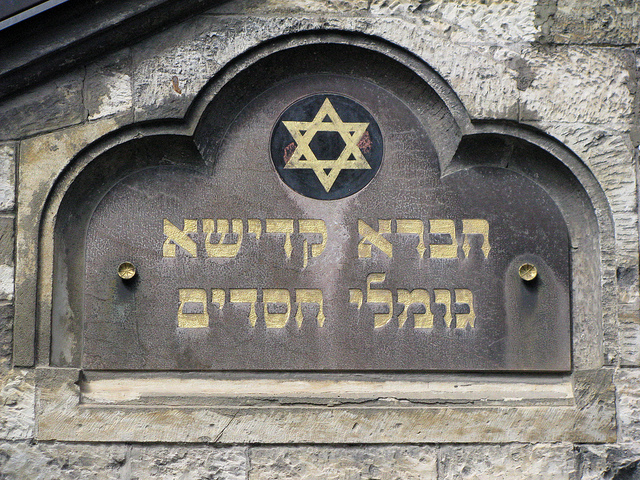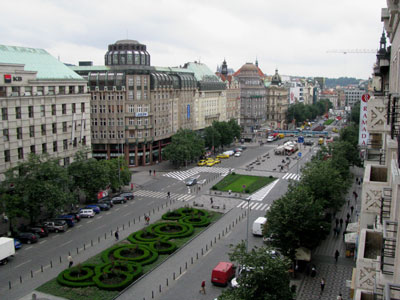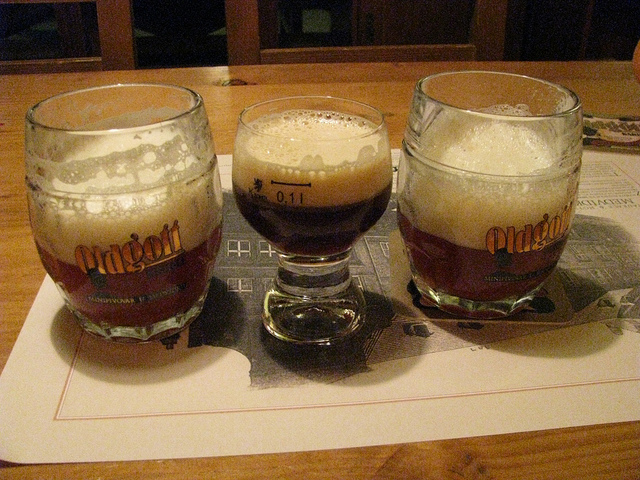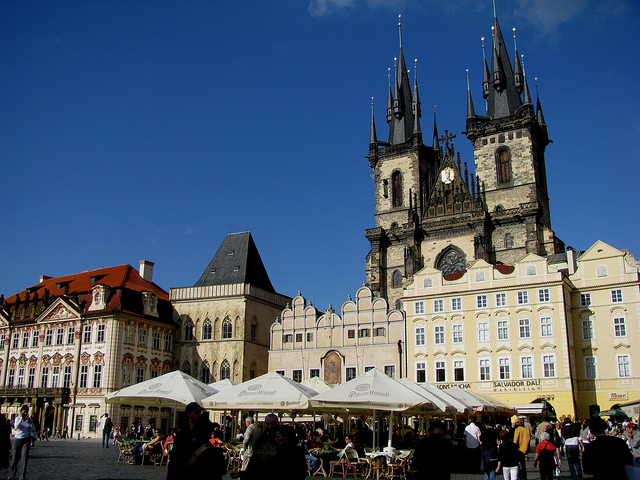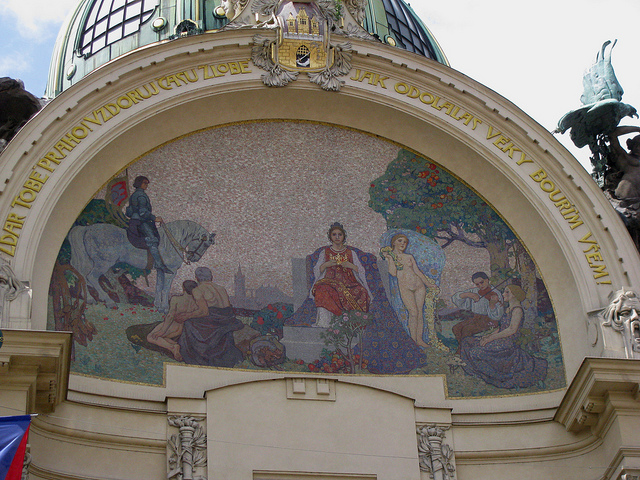One of Prague’s key attractions is the Jewish Quarter, the former Jewish ghetto of the city. So on this bright, yet blustery day I strolled from my hotel on Wenceslas Square over to Old Town Square to meet my personal tour guide for the day who would be meeting me for an informative tour of the Jewish Quarter.

A look at Prague’s Old Town Hall
I met Richard just after 10 am a few steps away from the Astronomical Clock and learned that he is a political science student who also does tours for Prague Walks, one of Prague’s most renowned tour guiding companies. Walking tours with a personal guide are a fantastic way of getting to know this fascinating city.

Richard, my expert guide
Standing right in the middle of Old Town Square, Richard started talking to me about Franz Kafka, one of Prague’s most important personalities and an important connection to Prague’s Jewish history. Born in 1883 to a middle-class German-speaking Jewish family, Kafka’s writings became some of the most important literary works of the 20th century, even though during his lifetime only a few stories were ever published.

Beautiful medieval architecture on Old Town Square
All of Kafka’s famous novels (The Trial, The Castle and Amerika) were published posthumously, a move initiated by his friend Max Brod, who was a famous Czech-Jewish author and the executor of Kafka’s will. Brod’s decision to publish Kafka’s work was actually against Kafka’s will. The anguished author had actually mandated that his literary works be destroyed upon his death, something that Brod fortunately prevented from happening.

Old Town Hall with the famous Astronomical Clock
Kafka’s writings are often dark and mysterious, in great part due to his lifetime battles with anxiety and depression. In 1924, Kafka died of consequences of tuberculosis, not even 41 years old. Richard explained that Kafka often met with members of the “The Prague Circle”, a secret group of friends and writers, in a building right here on Old Town Square. Kafka came of age during the last stages of the Austro-Hungarian Empire, a time that was characterized by an oppressive feeling of government control and surveillance, something that affected Kafka greatly.

North side of Old Town Square, with the Goltz-Kinsky Palace on the right
A little bit further north, on the other side of the stunning Church of Our Lady, is a magnificent Rococo palace that was built by an aristocrat between 1755 and 1765. During Kafka’s youth the Goltz-Kinsky Palace was actually a German speaking grammar school while today it hosts collections of the National Gallery. Richard also pointed out that the building is not in line with the other buildings on this side of the square, rather it is protrudes ahead of the other buildings. Apparently, Count Goltz had bribed several councilmen to secure this prominent position, and by the time the other councilmen noticed it, the building was almost finished and the town council did not want to destroy it.

The Jan Hus Monument
In the middle of Old Town Square is a monument to Jan Hus, the 15th century priest and religious reformer who was burned at the stake in 1415 after being accused of heresy. Hus was a key contributor to the Protestant movement and strongly criticized the Catholic Church for its opulence and corruption. The execution of Hus eventually led to the Hussite Wars that lasted from 1420 to about 1434. Hussites were an important force in the Czech lands until the Battle of the White Mountain in 1620, the beginning of the Thirty Years War, when this Bohemian Protestant movement was crushed and Catholicism was restored with force. Twenty seven of the Hussite leaders were executed on Old Town Square, and 27 white crosses can still be seen embedded into the cobble-stones of Prague’s main square.

Detail on the wooden portal of Old Town Hall
The battle for religious freedoms has formed an important part of Prague’s history, not just for Protestants but also for Jews. Our actual start to our tour of the Jewish Quarter was a few minutes west of Old Town Square, next to the house where Franz Kafka spent his childhood. Just to the north of this location is the Jewish Quarter, which is a triangular district wedged in between the Vltava River and Old Town.

Our tour to the Jewish Quarter begins
Richard explained that Jewish settlers had lived in the Prague area as early as the 10th century. The first pogrom against Jews was recorded in 1096, and over the years Jews were concentrated in a walled-in ghetto. During the Middle Ages Jews were forced to wear a yellow star to identify them, and they were not allowed to work in agriculture which made many of them enter careers in banking and money-lending. Regulations also required that they live in segregated neighbourhoods called ghettos. Jews experienced much suffering throughout the centuries, and one of the worst pogroms happened in 1389, when 1,500 people were massacred on Easter Sunday.

Beautiful streets inside Prague’s Jewish Quarter
